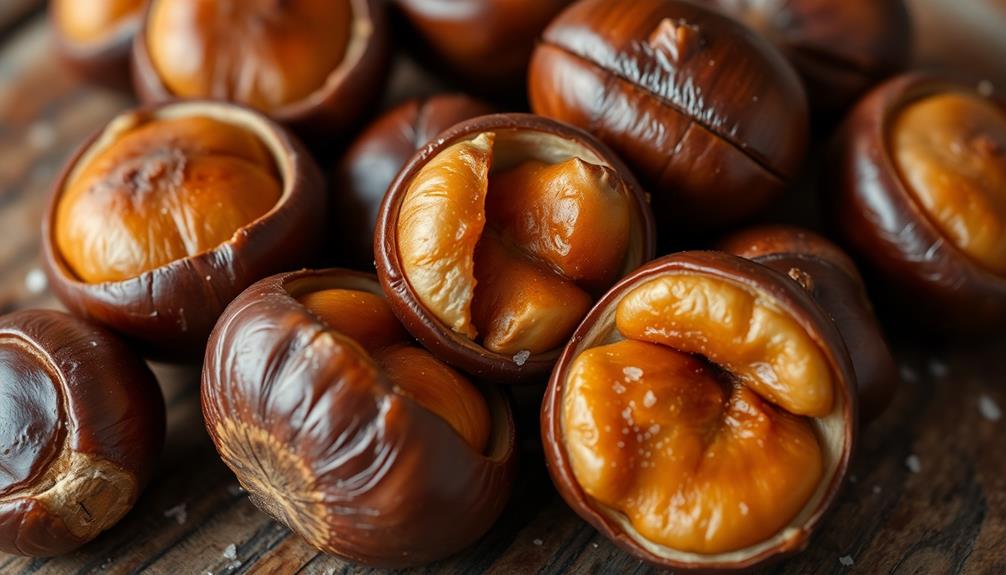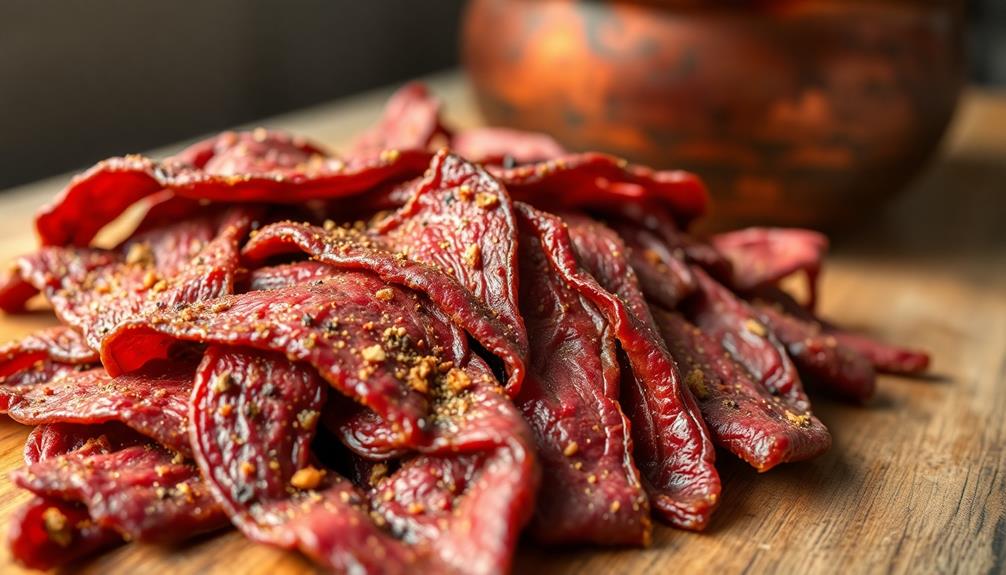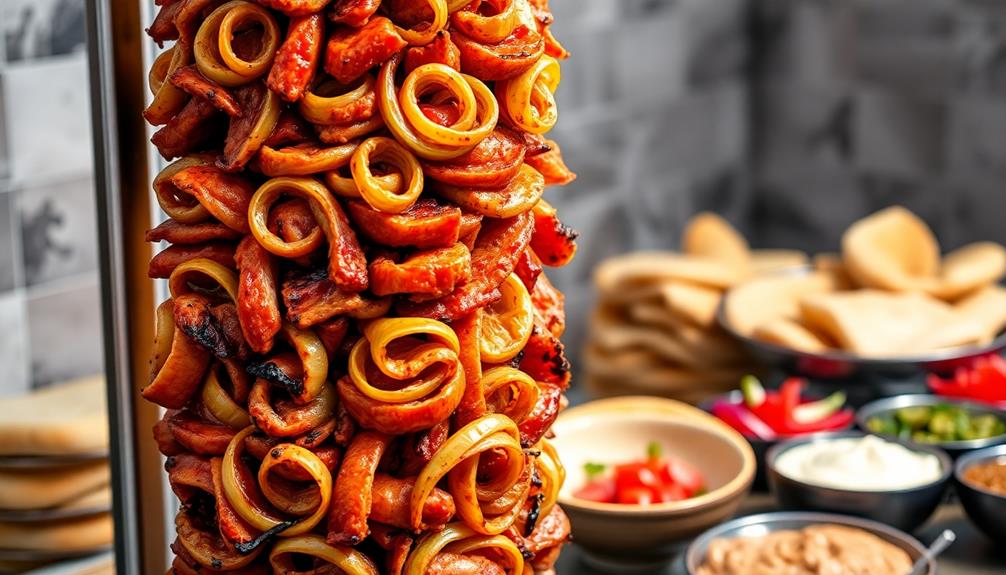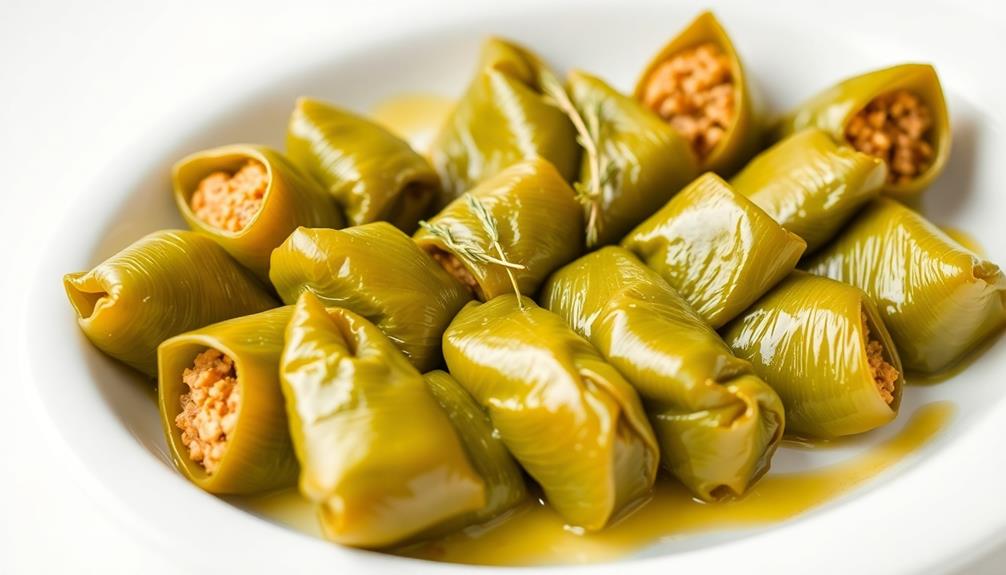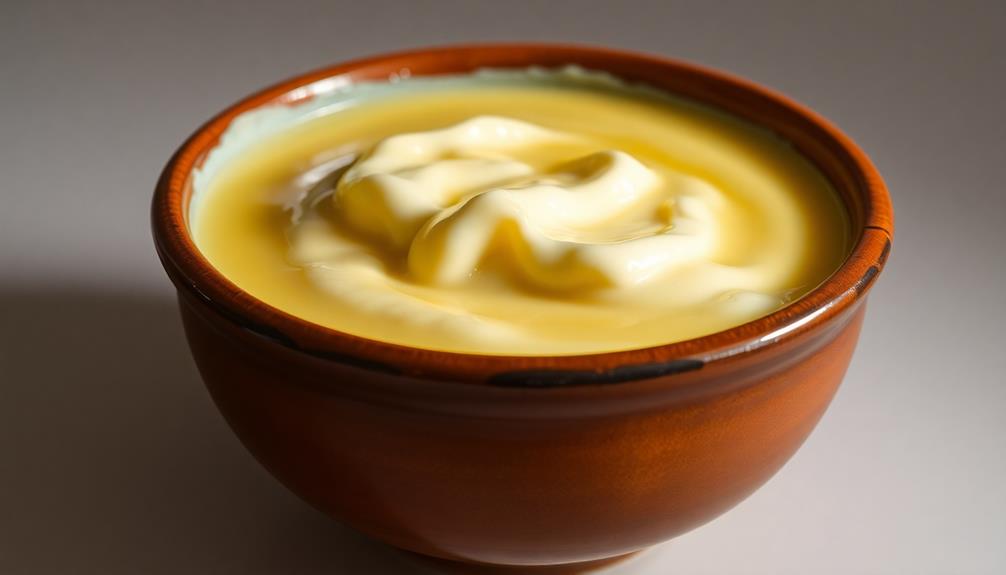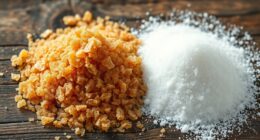Roasted chestnuts are a timeless holiday tradition that dates back to the Roman Empire. You'll love the warm, nutty aroma as you score the flat side of each chestnut, then roast them at 400°F until the shells split open. After they've cooled, gently peel off the outer shell to reveal the tender, golden-brown chestnut inside – the perfect snack to savor on a crisp winter day. Be sure to discard any unroasted chestnuts, as only the perfectly roasted ones offer that delicious, creamy texture. And if you're curious to learn more, keep reading to discover the full cooking steps for roasting chestnuts like a pro.
Key Takeaways
- Roasting chestnuts is a longstanding tradition dating back to ancient civilizations, particularly the Roman Empire, where they were a popular snack.
- The process involves scoring the chestnuts, roasting them at 400°F for 20-25 minutes, and then peeling off the shells to reveal the tender, sweet, and nutty chestnut meat.
- Scoring the chestnuts is crucial to ensure even cooking and prevent bursting during the roasting process.
- The roasted chestnuts should be allowed to cool briefly before peeling, as this makes the shells easier to remove.
- Any unroasted, hard chestnuts should be discarded, as only the soft, yielding ones are properly cooked and ready to be enjoyed.
History
Across the centuries, the roasting of chestnuts has become a cherished tradition. Chestnuts have been a part of human culture for thousands of years, with evidence of their use dating back to ancient civilizations. In fact, the practice of roasting chestnuts over an open fire can be traced back to the Roman Empire, where they were a popular snack among the people.
Over time, the tradition of roasting chestnuts spread to other parts of the world, becoming especially popular in Europe during the winter months. The warm, nutty aroma of roasted chestnuts has become synonymous with the holiday season, providing a comforting and nostalgic experience for many.
Today, the tradition of roasting chestnuts continues, with street vendors and holiday markets offering this beloved treat to eager customers. Whether you're enjoying them at home or on a chilly winter day, the ritual of roasting and sharing chestnuts remains a cherished part of our cultural heritage.
Cooking Steps
Preheat your oven to 400°F (200°C). Now, grab a sharp knife and carefully score the flat side of each chestnut by making an "X" shape. This will help the chestnuts open up as they roast.
Next, place the scored chestnuts on a baking sheet. Make sure they're in a single layer, so they cook evenly.
Slide the baking sheet into the hot oven and set a timer for 20-25 minutes. As the chestnuts roast, the "X" cuts will open, and the shells will peel back, revealing the tender, nutty insides.
When the timer goes off, use oven mitts to remove the baking sheet. The chestnuts should be golden brown and fragrant.
Let them cool for a few minutes, then peel off the shells and papery skins. Enjoy the warm, sweet chestnuts as a tasty snack or side dish. Mmm, the perfect fall treat!
Step 1. Score the Chestnuts
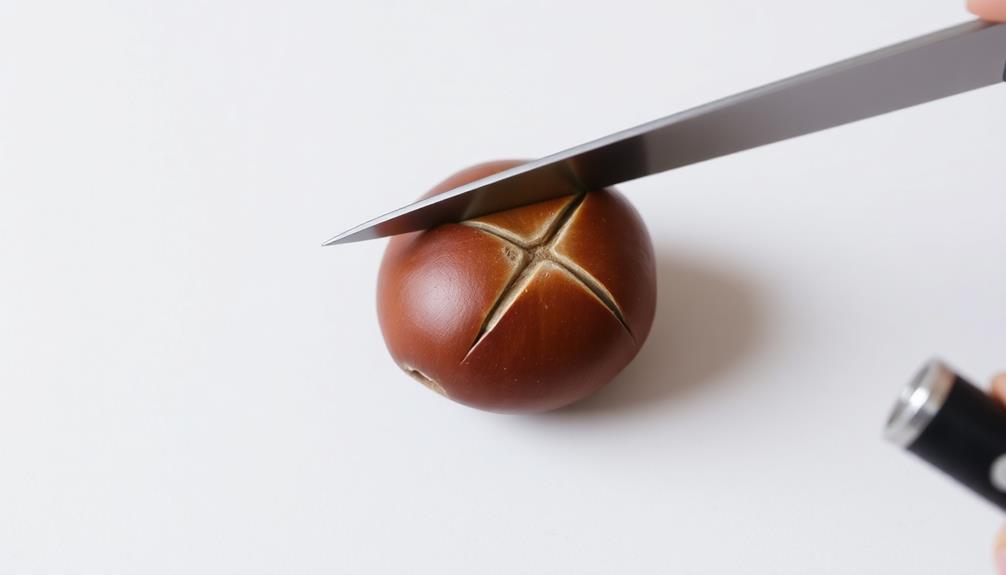
To begin, score the chestnuts using a sharp knife. This is an important first step to ensure the chestnuts cook evenly.
Gently place a chestnut on a cutting board and use the tip of the knife to cut a small "X" shape on the flat side of the nut. Be careful not to cut too deeply – you just want to pierce the tough outer shell.
Next, use the knife to lightly score the rounded side of the chestnut in a criss-cross pattern. This allows steam to escape during roasting, preventing the chestnuts from bursting open.
Repeat this process for each chestnut, taking care to score them all in the same way.
Once all the chestnuts are scored, you're ready to move on to the next step – roasting them to perfection! The scoring technique helps ensure your chestnuts come out tender, sweet, and utterly delicious.
Step 2. Roast Chestnuts at 400°F
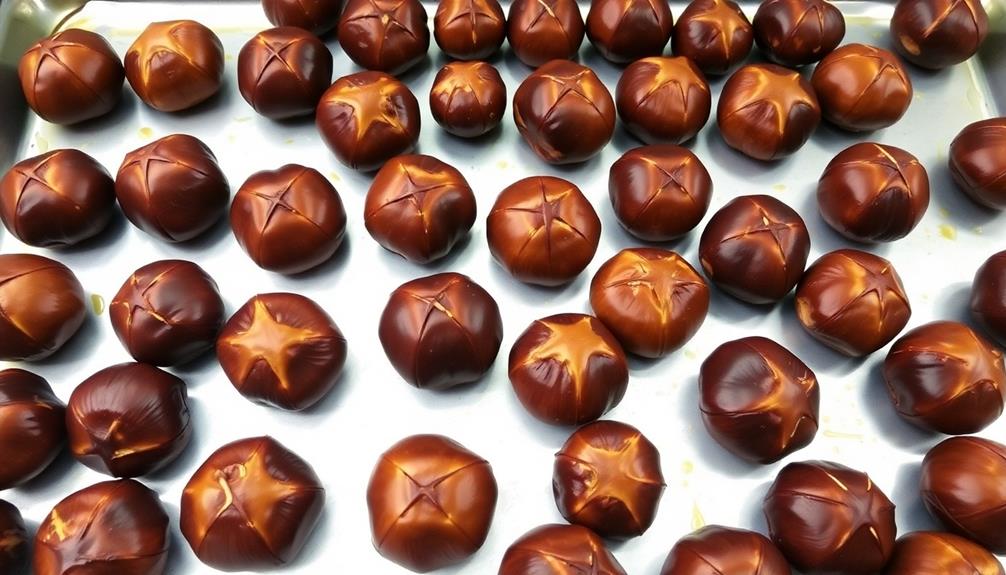
Preheat your oven to 400°F. You'll want to use a baking sheet lined with foil or parchment paper.
Take your scored chestnuts and arrange them in a single layer on the baking sheet. Be sure not to overcrowd them.
Now, roast the chestnuts for 15-20 minutes, turning them halfway through. You'll know they're done when the shells have split open and the insides are tender.
Be careful when handling the hot chestnuts. Use a towel or oven mitts to protect your hands.
Once they're roasted, let the chestnuts cool for a few minutes. Then, use a small knife to peel off the shells and papery skins.
Discard the inedible parts and enjoy the sweet, nutty flesh of the chestnuts. You can eat them as a snack or incorporate them into your favorite holiday recipes.
Step 3. Peel and Enjoy the Chestnuts
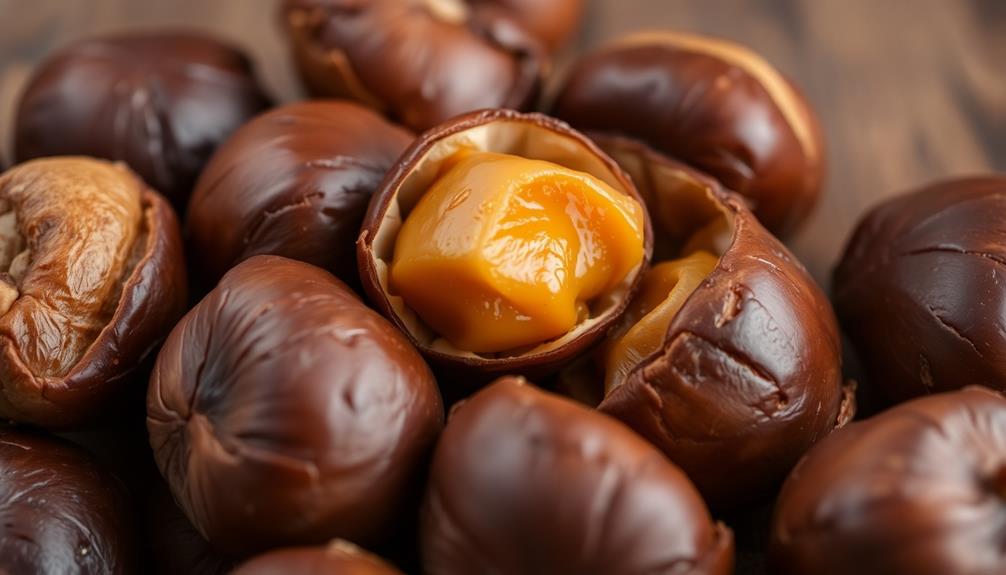
Once the chestnuts have finished roasting, let them cool for a few minutes. This will make them easier to handle.
Next, grab a sharp knife and carefully cut an "X" shape into the flat side of each chestnut. This will help the skin peel off more easily.
Gently squeeze the chestnut and the skin should slip right off, revealing the sweet, tender meat inside. Be careful, as the chestnuts will still be hot.
If the skin doesn't come off easily, you can try roasting them a bit longer.
Once they're peeled, you can enjoy the chestnuts on their own or add them to your favorite recipes. The natural sweetness and creamy texture make them a delightful treat.
Savor the warm, comforting flavor as you snack on these holiday favorites.
With a little effort, you'll be able to peel and enjoy these delicious roasted chestnuts in no time.
Step 4. Let Chestnuts Cool Before Peeling
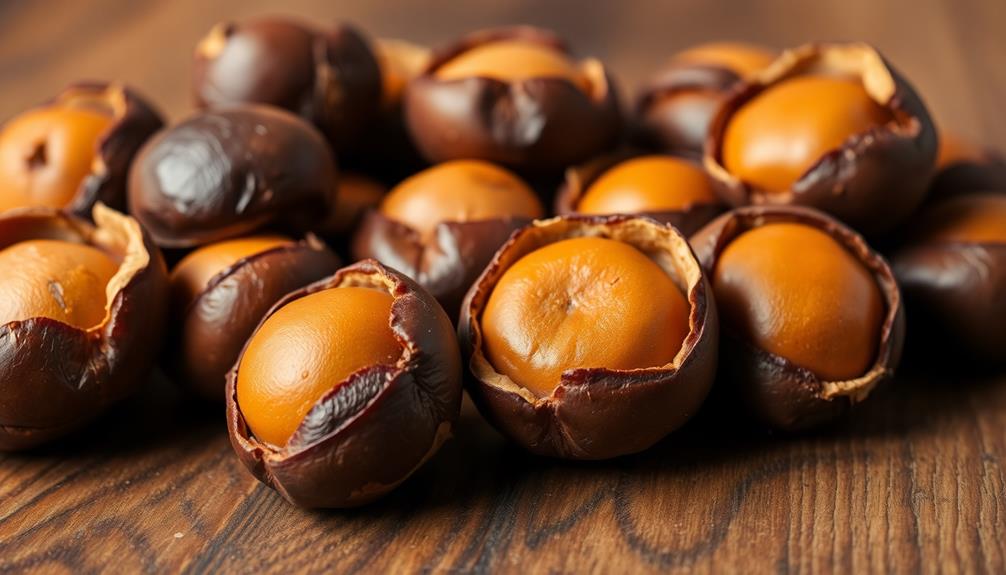
After the chestnuts have finished roasting, let them cool for a few minutes. This cooling period is crucial – it allows the chestnuts to become easier to handle and peel. The hot outer shell can be tricky to remove when they're straight out of the oven, so give them a bit of time to cool down.
Once the chestnuts have had a chance to rest, you can start peeling them. Gently squeeze each one, and the shell should start to crack and come away. Be careful, as the chestnut flesh can still be quite hot.
Peel the shell and papery skin off carefully, revealing the tender, golden-brown chestnut inside.
Peeling the chestnuts while they're still warm makes the process much simpler. The shells and skins slip off more easily, and you can enjoy the delicious, sweet flavor of the roasted chestnuts.
Take your time and savor the process – it's all part of the fun of eating this classic seasonal treat.
Step 5. Discard Any Unroasted Chestnuts

When the roasting timer goes off, be sure to inspect each chestnut. Some may not have fully cooked, and you'll want to discard those. Gently pick up each one and give it a gentle squeeze. The ones that are ready will feel soft and yielding to the touch. The uncooked ones will still be hard and unyielding.
Toss any hard, unroasted chestnuts into the compost or trash. You don't want to keep those, as they'll be tough and unpleasant to eat.
The perfectly roasted chestnuts will have a rich, sweet flavor and a soft, creamy texture. Those are the ones you'll want to enjoy!
Be sure to set aside the roasted, tender chestnuts in a bowl so you can easily peel and eat them. With a little care, you'll have a delightful batch of roasted chestnuts ready to savor.
Final Thoughts
Ultimately, roasting chestnuts can be a delightful and satisfying experience.
You'll feel a sense of accomplishment as you transform these humble nuts into a tasty treat. The aroma of the roasted chestnuts filling your kitchen is sure to bring a smile to your face and warm your heart.
Even if you've never tried roasting chestnuts before, don't be intimidated – it's a simple process that's well worth the effort. With a little practice, you'll become a pro at selecting the perfect chestnuts, scoring them just right, and roasting them to perfection.
And the best part? Enjoying the sweet, nutty flavor of your homemade roasted chestnuts.
Frequently Asked Questions
How Long Do Roasted Chestnuts Last After Cooking?
Roasted chestnuts are a delightful treat, and you might be wondering how long they'll stay fresh after cooking.
Well, good news! Properly stored, roasted chestnuts can last up to a week. Keep them in an airtight container in the fridge, and they'll stay crisp and flavorful.
Enjoy those nutty, warm delights for days to come. Just be sure to savor them at their peak – they're simply irresistible when freshly roasted. And don’t forget to try out different recipes with these freshly roasted nuts. They make a fantastic addition to salads, stir-fries, or just as a tasty snack on their own. For a delicious and satisfying meal, you can use them in a recipe for rice with chicken. The combination of the nutty flavor with tender chicken and fluffy rice is a winning one that you won’t want to miss.
Can Roasted Chestnuts Be Reheated?
Absolutely, you can reheat roasted chestnuts! Just pop them back in the oven for a few minutes, and they'll be warm and delicious all over again.
The key is to keep a close eye on them, so they don't dry out. Once they're hot and fragrant, you're good to go.
Reheating is a great way to enjoy those tasty nuts even after the initial roasting. Just be careful not to overdo it, and you'll have a scrumptious snack in no time!
What Is the Best Way to Store Roasted Chestnuts?
To store roasted chestnuts, you'll want to keep them in an airtight container. This helps lock in their delicious flavor and prevents them from drying out.
Pop the container in the fridge, and your chestnuts will stay fresh for up to a week. If you need to store them for longer, try freezing them. Just make sure to let them thaw before enjoying their warm, toasty goodness all over again!
Can Roasted Chestnuts Be Frozen?
Yes, you can absolutely freeze roasted chestnuts!
It's a great way to enjoy their sweet, nutty flavor all year round. Just let the chestnuts cool completely, then pop them into an airtight container or freezer bag.
They'll stay fresh for up to 6 months in the freezer. When you're ready to eat them, simply thaw the chestnuts at room temperature or in the microwave.
How Can I Tell if Chestnuts Have Gone Bad?
How can you tell if chestnuts have gone bad?
It's easy to spot when chestnuts have gone off. First, give them a good sniff – if they've a sour or musty odor, that's a sign they've gone bad.
You can also give them a gentle squeeze. If the chestnut feels soft or squishy, it's time to toss it.
Lastly, look for any signs of mold or discoloration. If you see any of these, it's best to say goodbye to those chestnuts and start fresh with some new ones.
